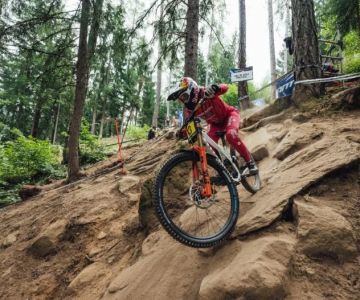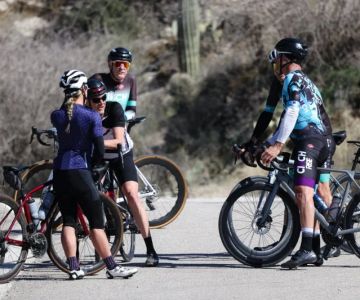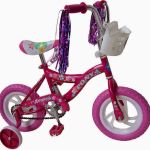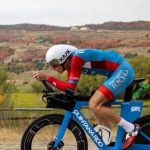
- understanding-the-shift-casual-to-competitive-cycling
- building-a-foundation-fitness-discipline-and-mindset
- equipment-and-gear-that-makes-a-difference
- joining-your-first-competitive-event
- navigating-mistakes-lessons-from-riders
- sustaining-growth-and-passion
1. Understanding the Shift: Casual to Competitive Cycling
Transitioning from casual to competitive cycling isn't just about riding faster—it's about redefining your relationship with the sport. For many cyclists, weekend rides evolve into something more purposeful. The thrill of chasing personal records, joining group rides, and eventually signing up for races becomes irresistible.
One British cyclist, Tom Lewis, began his journey riding around the Yorkshire Dales for leisure. A chance encounter with a local cycling club during a charity ride led him down the rabbit hole of criteriums and time trials. His story isn’t unique—it mirrors that of countless others who found new motivation in structured training and competition.
2. Building a Foundation: Fitness, Discipline, and Mindset
The first noticeable leap when making the transition to competitive cycling is physical conditioning. Competitive events demand higher endurance, sprint capacity, and recovery ability. Structured training plans become essential, often involving heart rate zones, interval training, and recovery days.
Just as important is mental readiness. Unlike casual rides, racing pushes you into discomfort zones—be it maintaining pace in a peloton, facing a climb, or reacting to attacks. Training your mind to cope with these stressors is as important as building leg strength. Sports psychologists often advise new racers to practice "visualisation" and "micro-goaling" to build mental resilience.
Discipline plays a central role too. This means planning weekly rides, managing nutrition, and sometimes saying no to social outings to prioritise sleep. The transition isn't just physical—it's a lifestyle shift.
3. Equipment and Gear That Makes a Difference
While fitness matters most, your gear must keep up. Competitive cyclists often switch from aluminium to carbon frames for improved aerodynamics and weight savings. Upgraded wheelsets, power meters, and clipless pedals become part of the performance equation.
Choosing the right kit isn't just about flash—it’s about marginal gains. For instance, UK-based time-trialist Hannah Davies swears by her custom-fitted aero helmet, which shaved off nearly 30 seconds from her 10-mile TT record. It’s these small tweaks, guided by professionals, that elevate performance.
For guidance on race-ready gear and accessories suited to your level, visit Cycling Guider, where you’ll find expert suggestions curated for British roads and events.
4. Joining Your First Competitive Event
The best way to learn competitive cycling is by doing. Start with local sportive events or charity rides, then progress to amateur-level time trials or criterium races. British Cycling’s official calendar is a great place to look.
Register early and study the course map. Arrive early on race day to warm up properly and mentally prepare. Don’t aim to win on your first go—just finishing strong is a victory. Talk to other riders, learn etiquette, and observe tactics.
Anecdotally, many first-time racers underestimate hydration and overdo pacing. Remember: your first race is your best classroom.
5. Navigating Mistakes: Lessons from Riders
Errors are part of the journey. Overtraining, ignoring recovery, poor bike fit—these are common pitfalls. In forums like UK’s Time Trialling Network, many riders share tales of burnout from “chasing watts” without sufficient rest.
One memorable case involved rider Sam W., who invested in top-tier gear but skipped core strength training. Result? Chronic lower back issues and missed races. His recovery taught him the value of balance—between riding, cross-training, and rest.
Be humble enough to reflect, adjust, and consult mentors or coaches. The cycling community is more generous than you think.
6. Sustaining Growth and Passion
Cycling is more than numbers—it’s about purpose. As you grow, shift your focus from just beating times to mastering technique, mentoring newer riders, and exploring new race formats. For many, passion fades when it's all about podiums. Find joy in the rhythm, the landscapes, and the camaraderie.
And remember, competitive doesn't mean joyless. Ride with heart, race with fire, and never forget why you started. For expert insights and gear picks that keep your journey smooth, Cycling Guider is here to help at every turn.







 Billet BMX5.0 (2 reviews)
Billet BMX5.0 (2 reviews) Far East Children Bicycle Factory1.0 (1 reviews)
Far East Children Bicycle Factory1.0 (1 reviews) Archer Motorsports, Inc.4.0 (8 reviews)
Archer Motorsports, Inc.4.0 (8 reviews) YEP Bike Works4.0 (55 reviews)
YEP Bike Works4.0 (55 reviews) Gorham Bike & Ski4.0 (498 reviews)
Gorham Bike & Ski4.0 (498 reviews) Alchemy Bikes4.0 (37 reviews)
Alchemy Bikes4.0 (37 reviews) How to Teach Kids to Ride a Bike: A Step-by-Step Guide for Parents
How to Teach Kids to Ride a Bike: A Step-by-Step Guide for Parents Tips for Riding on Busy City Streets: Smart Strategies for Urban Cyclists
Tips for Riding on Busy City Streets: Smart Strategies for Urban Cyclists Best US National Parks for Mountain Biking: Ride Epic Trails Across America
Best US National Parks for Mountain Biking: Ride Epic Trails Across America Best Aero Helmets for Time Trials and Racing
Best Aero Helmets for Time Trials and Racing How to Clean and Lubricate Your Bike Chain Like a Pro
How to Clean and Lubricate Your Bike Chain Like a Pro 10 Must-Have Items for Long-Distance Cycling Trips
10 Must-Have Items for Long-Distance Cycling Trips